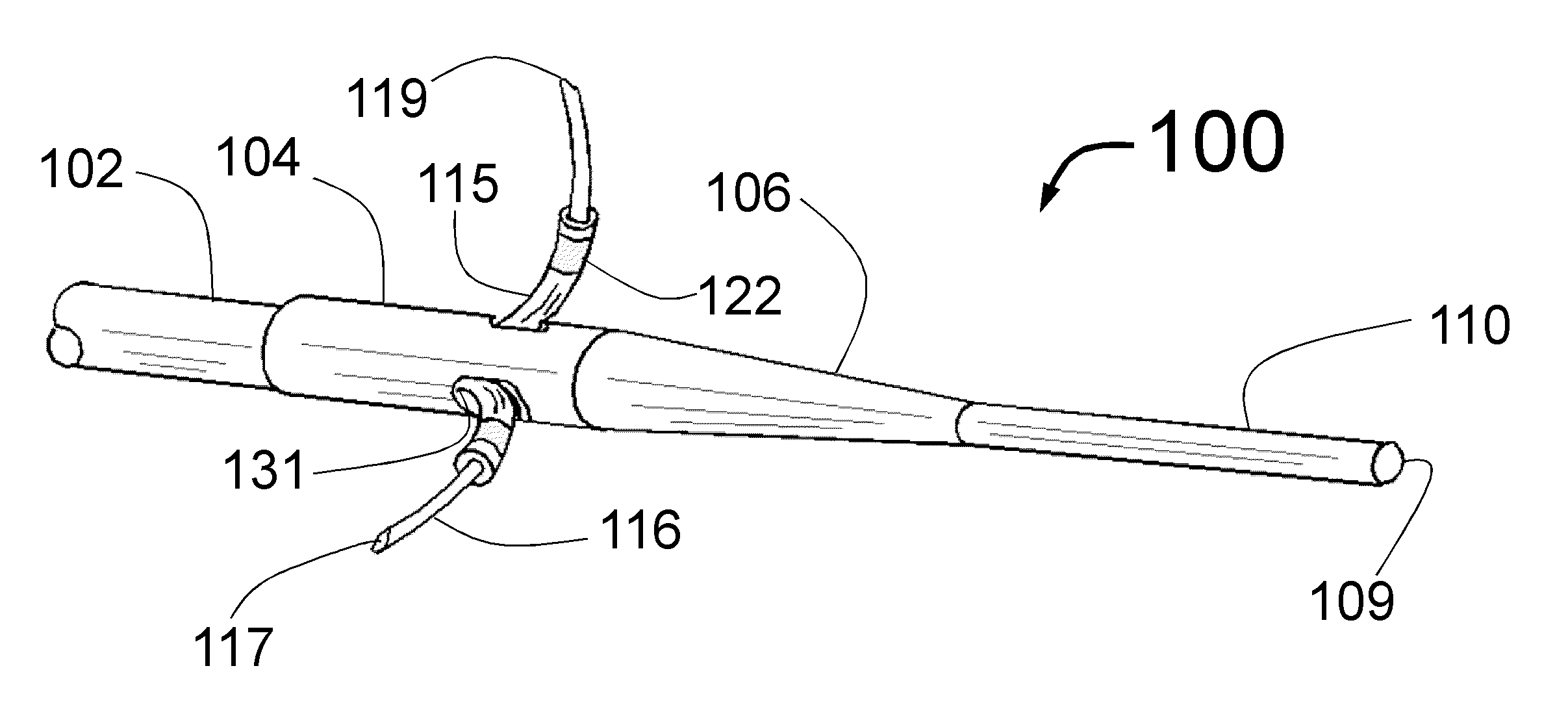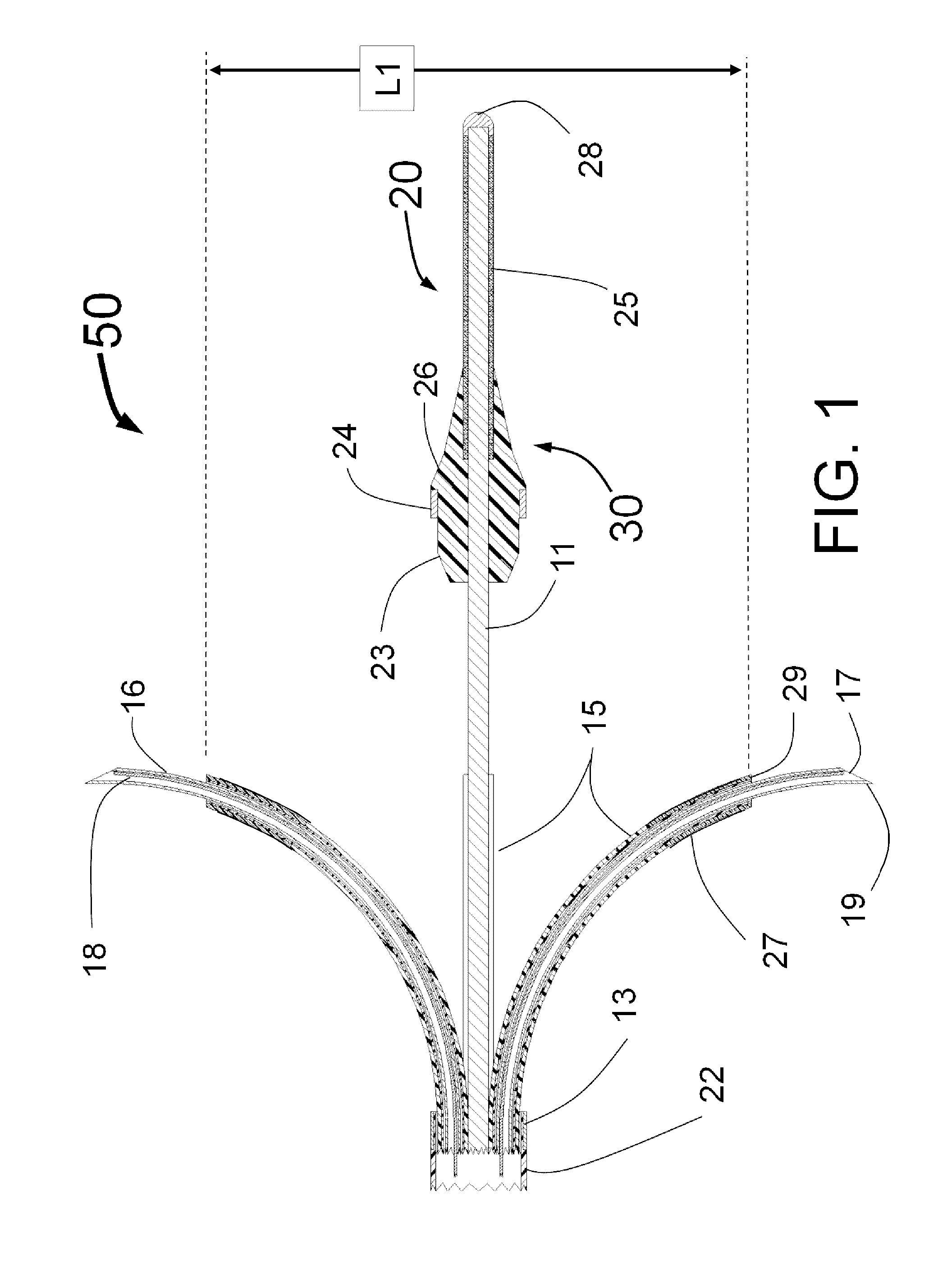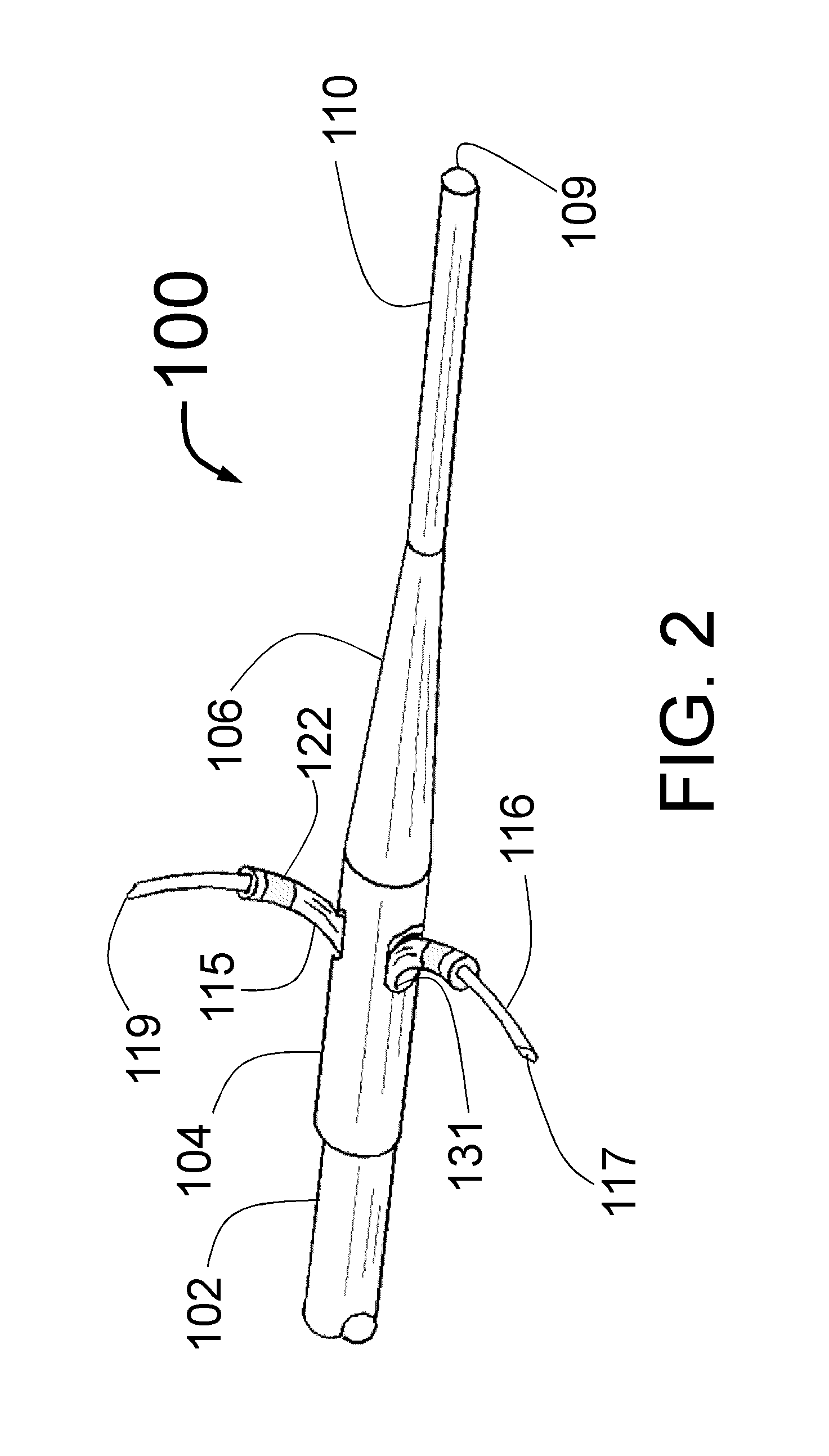Transvascular catheter for extravascular delivery
a transvascular catheter and catheter technology, applied in the field of transvascular catheters for extravascular delivery, can solve the problems of inability to achieve accurate and reproducible needle penetration to a targeted depth, lack of radial support or “backup", and inability to reliably and uniformly expand the needle to the desired position, etc., to achieve the effect of reducing potential trauma and enhancing the uniformity of guide tube expansion
- Summary
- Abstract
- Description
- Claims
- Application Information
AI Technical Summary
Benefits of technology
Problems solved by technology
Method used
Image
Examples
Embodiment Construction
[0165]FIG. 1 is a longitudinal cross-section of the expanded distal portion of the invention by Fischell as described in U.S. patent application Ser. No. 13 / 643,070 filed on Oct. 23, 2012. This Intra-vascular Nerve Ablation System (INAS) 50 has a fixed guide wire 20 with tip 28 at its distal end. FIG. 1 shows the INAS 10 in its fully open position with the self-expanding guide tubes 15 with coaxial injector tubes 16 with sharpened distal injection needles 19 and needle distal opening 17 which is the injection egress deployed outward beyond the distal end 29 of the guide tubes 15. It should be understood that this embodiment of the INAS 50 has four injector tubes 16 protruding through four guide tubes 15. The guide tubes 15 are the needle guiding elements that help support the thin and flexible injector tubes 16 with distal injection needles 19 as they are advanced into the wall of a target vessel.
[0166]In this configuration, the sheath 22 has been pulled back to allow the guide tube...
PUM
 Login to View More
Login to View More Abstract
Description
Claims
Application Information
 Login to View More
Login to View More - R&D
- Intellectual Property
- Life Sciences
- Materials
- Tech Scout
- Unparalleled Data Quality
- Higher Quality Content
- 60% Fewer Hallucinations
Browse by: Latest US Patents, China's latest patents, Technical Efficacy Thesaurus, Application Domain, Technology Topic, Popular Technical Reports.
© 2025 PatSnap. All rights reserved.Legal|Privacy policy|Modern Slavery Act Transparency Statement|Sitemap|About US| Contact US: help@patsnap.com



